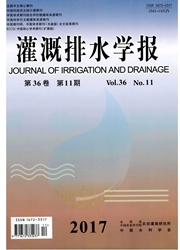

 中文摘要:
中文摘要:
采用盆栽试验,在Cd模拟污染土壤中施入硝酸-高锰酸钾改性纳米碳黑(MBC)钝化重金属,分别种植重金属耐受植物黑麦草(Lolium Perenne L.)和重金属超积累植物红叶菾菜(Beta vulgaris L.var.cicla L.),研究了MBC在钝化修复Cd污染土壤过程中对土壤速效氮的影响。结果表明,MBC在土壤中能够有效降低土壤中DTPA-Cd质量分数,且植物和MBC联合作用更能有效地降低其质量分数。MBC能够明显增加土壤中速效氮量,更稳定地为植物生长提供营养物质。黑麦草和红叶菾菜对土壤速效氮量影响效果差异不显著,MBC可应用于有植物种植的轻污染土壤修复中,不会影响土壤中速效氮养分的量。MBC添加到土壤中会减缓土壤速效氮量的下降速率,有利于土壤养分的保持。研究结果可以为重金属原位钝化技术提供理论支持,为改性纳米碳黑成功地应用于重金属轻微、轻度污染农田土壤修复提供科学依据。
 英文摘要:
英文摘要:
Pot experiment was conducted in this paper to study the effect of nano-carbon black particles modified by nitric acid-potassium permanganate (MBC) on available N in remediating Cd-contaminated soils. We used rye- grass (Loliurn Perenne L.) and red beet (Beta vulgaris L. vat. cicla L.) as the plant model. The results showed that although MBC alone can reduce the content of DTPA-Cd in soil, a combined use of it with the two plants was more efficient. MBC significantly increased the available nitrogen and hence promoted plant growth; there is no significant difference in the available N between ryegrass and red beet. Adding MBC to the soil could slow down the decrease of available N and hence increased nutrient retention in soil. Our results provided an efficient in-situ technology to remediate soils slightly polluted by heavv metals.
 同期刊论文项目
同期刊论文项目
 同项目期刊论文
同项目期刊论文
 A Comparison Study of Mechanism: Cu2+ Adsorption on DifferentAdsorbents and their Surface-modified A
A Comparison Study of Mechanism: Cu2+ Adsorption on DifferentAdsorbents and their Surface-modified A 期刊信息
期刊信息
